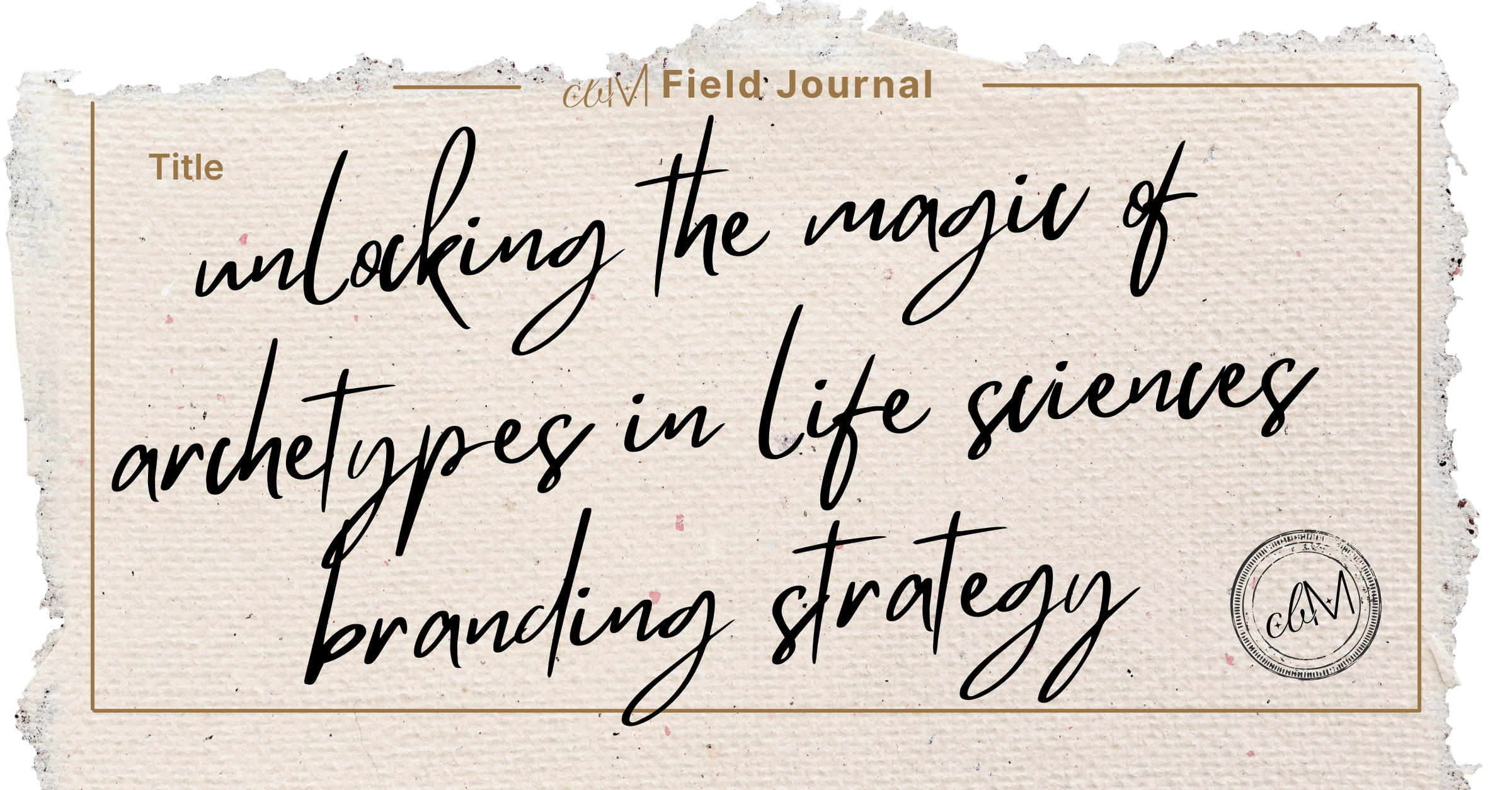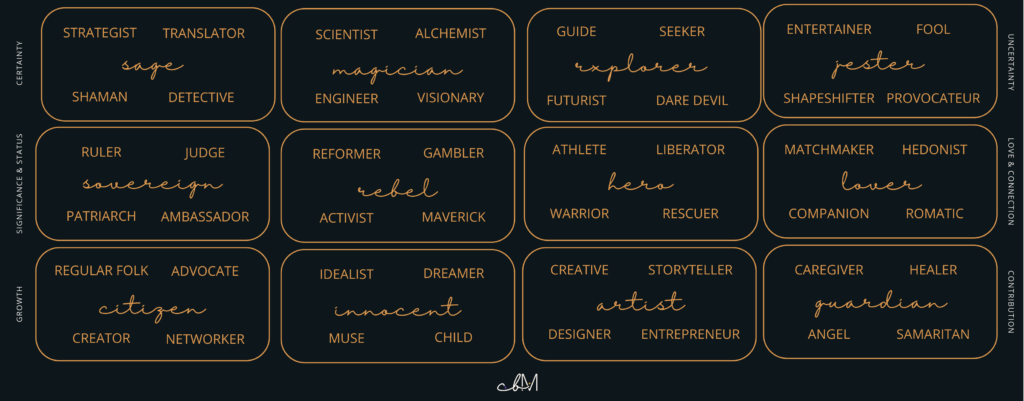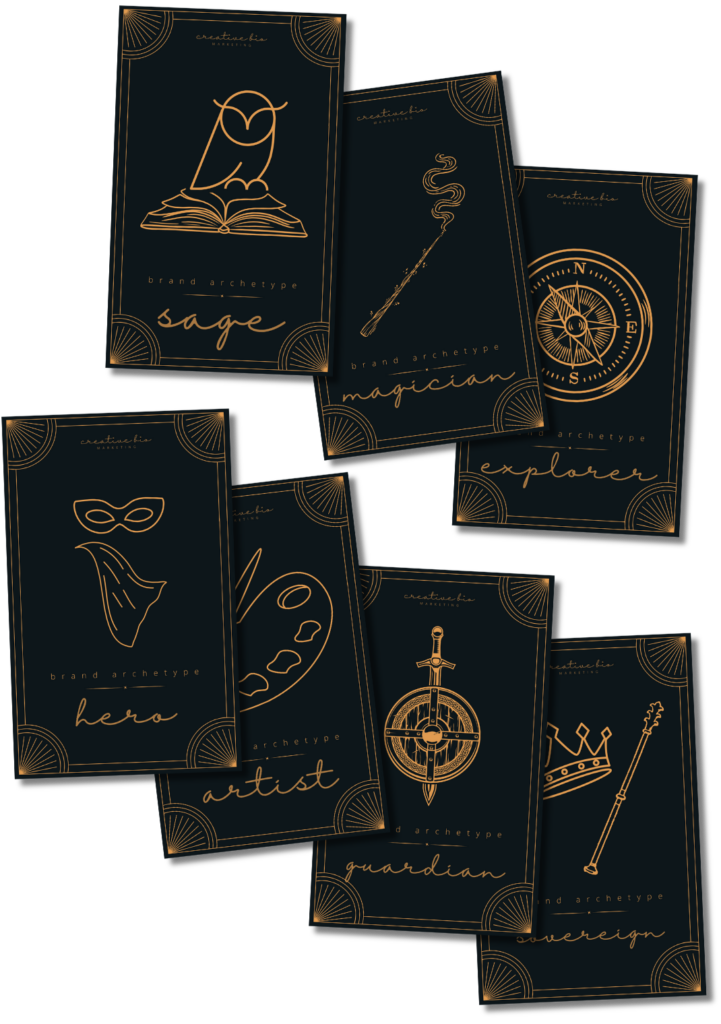
Unlocking The Magic Of Archetypes In Life Sciences Branding Strategy
In a world where scientific breakthroughs and technological marvels are everywhere, standing out in the life sciences sector requires more than just innovation – it demands a touch of magic. Enter life sciences branding strategies, specifically the use brand archetypes, which breathe life into your brand’s story and create an emotional connection with your audience. As a foundational component of your brand’s personality, these archetypes are the secret sauce that can elevate your brand from blending in to breaking through.
what are brand archetypes?
The concept of archetypes was originally conceived by psychologist Carl Jung and are based on universal patterns that are familiar to everyone. They trigger instinctive responses in consumers. For instance, the Mother archetype is nurturing, caring, and reliable.
In 2001, 12 distinct brand archetypes were identified by Mark and Pearson’s seminal work: The Hero and The Outlaw: Building Extraordinary Brands Through the Power of Archetypes. This framework suggested that brands should rely on a single archetype or risk being afflicted by “brand schizophrenia” (aka having no identity instead of a strong identity.) These primary archetypes can be further expanded and differentiated into a grid of archetypes based on dichotomies; certainty versus uncertainty, significance & status versus love & connection, and growth versus contribution. In total, the matrix offers 60 unique archetypes that brands can use to elicit emotional reactions and build connections with their audiences.

Counter to Mark and Pearson’s claim that brands should rely on a single brand archetype in their marketing efforts, a 2023 publication in Business Horizons demonstrates that some of the fastest-growing and most well-known/respected brands leverage multiple archetypes in their strategies. In fact, the research found that less than 2% of brands (out of over 2,400 in the dataset) associated with a single archetype. Alternatively, most brands evoked at least two or three archetypes in their marketing communications. The authors note that emerging channels and technologies enable brands to use a wider range of touchpoints in their marketing communications. They conclude that reliance on multiple archetypes has become increasingly important for standing out in crowded markets.
Key Archetypes for the Life Sciences
But let’s rewind for a moment: despite this recent evidence, life sciences companies are notorious for defaulting to common brand archetypes. In many cases, when there is no real brand strategy, a common archetype may arise organically. Other times, there is a strong reliance on a single traditional, well-loved archetype. Regardless, this makes it very difficult for companies to stand out and gain the visibility they would like to achieve with their targets.
So, what are those archetypes?
The Sage
- Impacts: wisdom, knowledge, expertise
- Qualities: insight, intelligence, analysis
Any life sciences company that leverage expertise that enables discoveries and developments are likely employing The Sage archetype. The Sage Family includes the Strategist, The Translator, The Shaman, and The Detective.
Who does this? An example of a company that relies primarily on the sage is Thermo Fisher Scientific. They emphasize that they are advancing science through state-of-the-art equipment and solutions.
The Magician
- Impacts: transformation, change, wonder
- Qualities: visionary, catalyst, charismatic
Companies that position themselves as change-makers for transforming scientific research and enabling breakthroughs that seem almost impossible are probably leveraging The Magician archetype. The Magician Family includes The Scientist, The Alchemist, The Engineer, and The Visionary.
Who does this? 10X Genomics is an example of a company that focuses on how its technologies unlock new biological underpinnings.
The Explorer
- Impacts: freedom, discovery, adventure
- Qualities: ambition, curiosity, seeking
Those who are pushing the boundaries of what is possible in science and technology often adopt the Explorer archetype. The Explorer Family includes The Guide, The Seeker, The Futurist, and The Dare Devil.
The Hero
- Impacts: courage, bravery, triumph
- Qualities: strength, resilience, determination
When the stakes are high and a company is focusing their efforts on conquering a disease or large-scale problem, it often embodies The Hero archetype. The Hero Family includes The Athlete, The Liberator, The Warrior, and The Rescuer.
The Creator
- Impacts: innovation, imagination, originality
- Qualities: visionary, artistic, inventive
Organizations who focus on creating custom solutions for those in their market often claim The Creator archetype due to their innovative approaches and strong problem-solving abilities. The Creator is part of The Artist Family, which also includes The Storyteller, The Designer, and The Entrepreneur.
Who does this? CROs such as Charles River Laboratories highlight its creative and flexible solutions in the drug discovery and development space.
The Caregiver
- Impacts: compassion, nurturing, protection
- Qualities: altruism, service, support
Companies who are committed to improving end outcomes such as patient lives, and advancing health and science often embody the Caregiver archetype. The Caregiver is part of the Guardian Family, which also includes The Healer, The Angel, and The Samaritan.
Who does this? Many therapeutic developers, such as Genentech, will leverage their dedication to saving and transforming lives with its innovative therapies.
The Ruler
- Impacts: leadership, responsibility, control
- Qualities: authority, power, order
Established companies that claim a strong leadership presence in a market often embody The Ruler archetype. The Ruler is part of the Sovereign Family, which also includes The Judge, The Patriarch, and The Ambassador.

Why Life Sciences Brands Should Consider Multiple Archetypes
Complexity is the name of the game in the life sciences. It seems that it is required for innovation and makes for an interesting challenge for marketers. First, innovation happens for many reasons. For example, a therapy is not developed solely on the basis of compassion (Caregiver archetype) but also because there is an ingenious technological breakthrough enabling it (Engineer archetype). An organization may want to play off both angles in various communications to build the trust and credibility they need to impact the market.
Second, I’d argue that limiting a company to a single archetype is a deadly tactic for many life sciences companies. Take life science tools companies, for instance. They must simultaneously message to executives at large pharma and biotech companies, funding agencies/investors, and researchers. These are extremely diverse groups filled with unique personas and who require individualized messaging. Sticking to a single archetype for all marketing could make this nearly impossible.
Alternatively, brands that identify several core archetypes (all of which are still authentic to the company and what it stands for) will benefit from the flexibility and freedom to create several compelling storylines in their marketing communications based on each target and where they are in the customer journey.
Implementing Archetypes in Your Life Sciences Branding Strategy
As a brand strategist, I’d like to emphasize that brand archetypes are just one piece of a very complex puzzle. But they are can be extremely useful guiding tools that can ease your commercial operations if leveraged correctly.
Step 1. Competitive Analysis
It is critical to assess the main narrative approaches in competitors’ brand massages. Creating a competitive map of archetypes used by competitors can help a company determine was resonates with the target audiences and understand how competitors are meeting the emotional needs of the audience. After mapping competitors, a company must undergo the same process to evaluate its own brand, analyzing its emotional drivers and mapping natural areas of overlap with competitors.
Step 2. Development
Through workshops with key internal and external stakeholders, brands must explore the emotional relevance of various archetypes. Tying archetypes to the mission and vision of the organization is a good place to start evaluating the fit of each archetype. Companies should also solicit feedback from customers and the larger market to evaluate various archetypes to resonate with customers’ needs and preferences. Market research data can often be helpful in this effort. This is also the time to explore how combinations of archetypes can provide additional value to the brand.
Step 3. Integration
Now it’s time to craft narratives over time across the different stages of the customer journey. Companies may want to employ different archetypes during the awareness stage to build interest and rely on a different archetype when driving customers to take action. And as always, it’s important to continuously assess the effectiveness of your archetypes and adjust as needed.
Whether you are just getting started or well on your way, you’ll be glad that you took the time to establish a strong and relatable brand identity. By leveraging the power of brand archetypes, your company can not only stand out in a crowded market but also build deeper connections with your audience. Leveraging the right archetype(s) can transform your branding strategy and propel your company to the next level.

